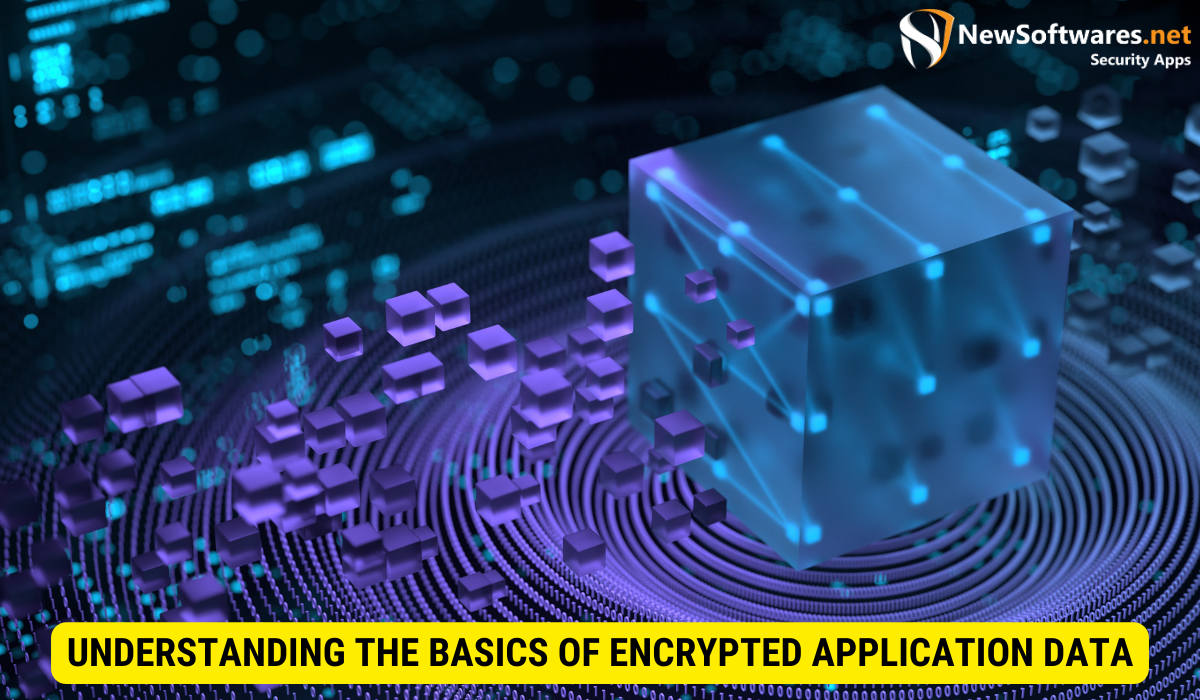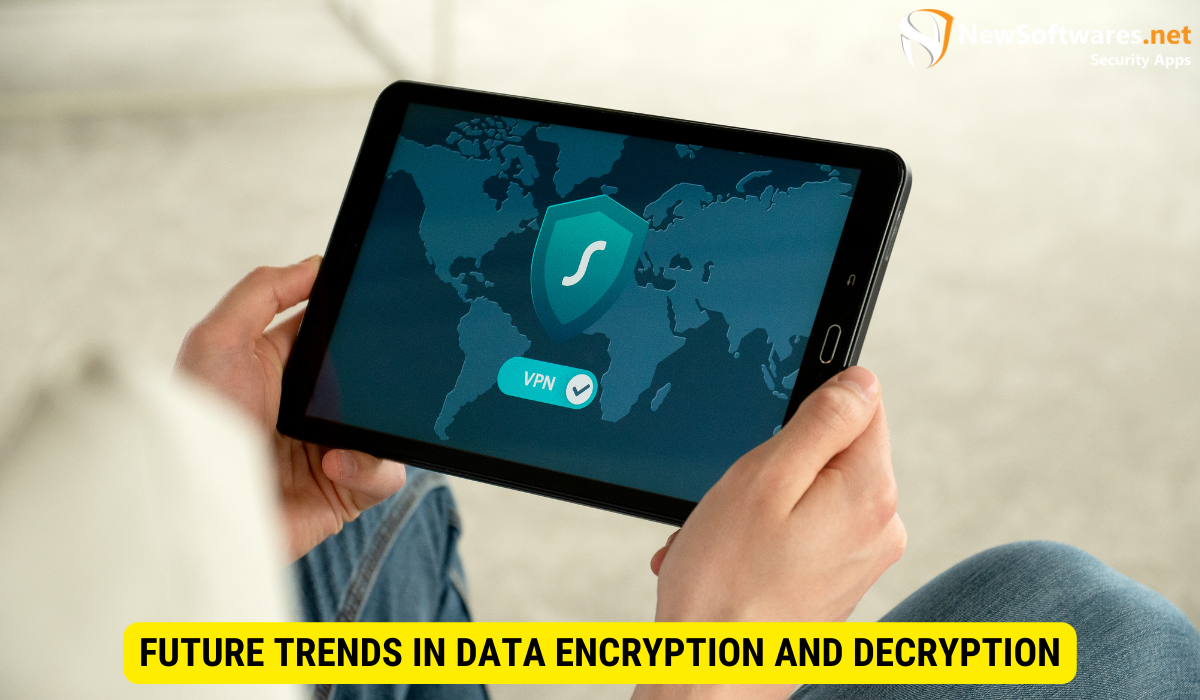Deciphering encrypted application data involves reversing the encryption process using the correct decryption key. Specialized tools, techniques, and knowledge of encryption methods are utilized in this process.
In today’s digital landscape, data security is of paramount importance. As more and more sensitive information is being transmitted and stored electronically, the need for robust encryption techniques has become crucial. Encrypted application data ensures that sensitive data remains secure and protected from unauthorized access. However, deciphering this encrypted data can be a complex and challenging task. In this article, we will delve into the process of deciphering encrypted application data, the challenges associated with it, and strategies for enhancing its readability.
Understanding the Basics of Encrypted Application Data

Before we delve into the process of deciphering encrypted application data, let’s first understand the basics of what it entails. Encrypted application data refers to the data that is intentionally encoded or scrambled using an encryption algorithm. This ensures that the data remains incomprehensible to anyone who does not possess the correct encryption key.
Encryption plays a fundamental role in data security. By encrypting application data, organizations can safeguard sensitive information such as personal details, financial data, and intellectual property, from unauthorized access and potential data breaches.
What is Encrypted Application Data?
Encrypted application data refers to any information that has been transformed using encryption techniques to make it unreadable to unauthorized parties. This can incorporate a wide range of data, such as user credentials, financial transactions, and confidential documents. The encryption process typically involves converting the original data into a cipher, which can only be deciphered with the correct encryption key.
The Importance of Encryption in Data Security
Encryption is crucial in ensuring the confidentiality, integrity, and authenticity of sensitive data. It provides an additional layer of shield, making it extremely difficult for illegal individuals to access or manipulate the data. In today’s highly interconnected world, where cyber threats are becoming increasingly sophisticated, encryption plays a vital role in safeguarding against data breaches.
By encrypting application data, organizations can comply with regulatory requirements plus industry best practices related to data protection. This not only helps maintain trust and confidence among customers but also protects the reputation of the organization.
The Process of Deciphering Encrypted Data
Deciphering encrypted application data involves reversing the encryption process to transform the cipher back into its original form. This is done by using the correct decryption key, which is the counterpart of the encryption key used during the encryption process.
Key Concepts in Data Decryption
When deciphering encrypted application data, it is crucial to understand some key concepts:
- Encryption Algorithms: Different encryption algorithms are used to transform plaintext into ciphertext. Understanding the specific encryption algorithm used is vital to deciphering encrypted data.
- Decryption Keys: Decryption keys are used to reverse the encryption process and transform the ciphertext back into its original form. Without the correct decryption key, deciphering encrypted data is nearly impossible.
- Brute Force Attacks: Brute force attacks involve systematically attempting all possible encryption keys until the correct one is found. While time-consuming, they can be used as a last resort when the encryption key is unknown.
By grasping these key concepts, one can begin to decipher encrypted application data and unveil its underlying information.
Tools and Techniques for Deciphering Encrypted Data
A variety of tools and techniques can assist in deciphering encrypted application data:
- Decryption Software: Specialized software can automate the decryption process, significantly reducing the time and effort required to decipher encrypted data.
- Knowledge of Encryption Methods: Understanding the encryption methods employed, as well as any known vulnerabilities, can help identify potential weaknesses and streamline the deciphering process.
- Data Analysis: Analyzing patterns, data structures, and metadata associated with the encrypted data can provide valuable insights and assist in decrypting the information.
By leveraging these tools and techniques, one can effectively decipher encrypted application data and retrieve the original information it contains.
Challenges in Deciphering Encrypted Application Data
Deciphering encrypted application data presents a unique set of challenges that often require careful consideration and expertise.
Common Obstacles in Data Decryption
Some of the common obstacles faced when deciphering encrypted data include:
- Complex Encryption Algorithms: Encryption algorithms used today are often highly complex and mathematically secure. Breaking these algorithms and deciphering data can be a time-consuming process.
- Insufficient Computing Power: Certain encryption techniques require an enormous amount of computational power and time to break. The task may be virtually impossible without advanced computing resources.
- Lack of Decryption Keys: Without the correct decryption key, deciphering encrypted data becomes significantly more challenging. If the encryption key is lost or unknown, alternative methods, such as brute force attacks, may be necessary.
Overcoming these difficulties requires a comprehensive understanding of encryption methods, access to advanced computing resources, and a range of decryption techniques.
Addressing Potential Risks and Threats
When deciphering encrypted application data, it is vital to address potential risks and threats:
- Data Integrity: Deciphering encrypted data can potentially compromise its integrity. It is necessary to have mechanisms in place to verify the authenticity and integrity of the deciphered information.
- Data Privacy: While deciphering encrypted data, privacy concerns must be paramount. Appropriate measures should be in place to protect insightful information and ensure compliance with privacy regulations.
- Security Breaches: If decryption techniques or keys are compromised during the deciphering process, it can lead to security breaches and unauthorized access to decrypted data. strong security measures must be implemented to prevent such incidents.
By addressing these risks and threats proactively, organizations can mitigate potential vulnerabilities and ensure the security of decrypted application data.
Enhancing Readability of Deciphered Data
While deciphering encrypted application data is a significant achievement, merely unveiling the information is not enough. It is equally essential to enhance the readability and comprehension of deciphered data to extract meaningful insights.
Strategies for Improving Data Readability
To improve the readability of deciphered data, consider the following strategies:
- Data Cleansing: Remove any noise or unnecessary elements from the deciphered data to enhance its clarity and coherence.
- Contextual Analysis: Analyzing the deciphered data in its broader context can provide valuable insights and assist in understanding its true meaning and implications.
- Integration with Existing Data: Integrating the deciphered data with existing datasets can provide a comprehensive view and facilitate further analysis and interpretation.
By implementing these strategies, organizations can optimize the readability and usefulness of the deciphered application data.
The Role of Data Visualization in Readability
Data visualization techniques can play a crucial role in improving the readability of deciphered data. By presenting the information visually through charts, graphs, and interactive dashboards, organizations can enhance comprehension and derive actionable insights more effectively. Data visualization also enables the identification of patterns, trends and anomalies that may not be clear in raw data.
Utilizing intuitive visualizations can provide a powerful means of understanding and interpreting deciphered application data, enabling organizations to make conversant decisions based on the insights gained.
Future Trends in Data Encryption and Decryption

The field of data encryption and decryption is endlessly evolving to keep up with emerging technologies and evolving threats. Several future trends are shaping the landscape of data encryption and decryption.
Emerging Technologies in Data Security
New technologies, such as homomorphic encryption, quantum-resistant encryption, and secure multi-party computation, are revolutionizing data security. These technologies offer enhanced levels of protection against advanced cyber threats and enable secure data processing while maintaining confidentiality.
As these technologies mature and become extensively adopted, they will play a crucial role in further enhancing the security of encrypted application data.
The Impact of Quantum Computing on Data Encryption
Quantum computing has the budding to disrupt the field of data encryption. Its immense processing power can render traditional encryption algorithms obsolete. As a result, new encryption methods, known as post-quantum cryptography, are being developed to resist attacks from quantum computers.
Preparing for the era of quantum computing is vital to ensure the long-term security of encrypted application data.
Key Takeaways
- Encrypted application data ensures the security and confidentiality of sensitive information.
- Deciphering encrypted data involves reversing the encryption process using the correct decryption key.
- Data decryption involves understanding encryption algorithms and leveraging specialized tools and techniques.
- Data integrity, privacy, and safety must be carefully addressed when deciphering encrypted data.
- Enhancing the readability of deciphered data involves techniques such as data cleansing and data visualization.
FAQs
Why is encryption important in data security?
Encryption plays a very important role in data security by protecting sensitive information from unauthorized access and potential data breaches. It ensures the confidentiality, integrity, and authenticity of data.
How is encrypted application data deciphered?
Deciphering encrypted application data involves reversing the encryption process using the correct decryption key. Specialized tools, techniques, and knowledge of encryption methods are utilized in this process.
What are the challenges in deciphering encrypted application data?
Common challenges include complex encryption algorithms, lack of decryption keys, and insufficient computing power. Overcoming these challenges requires expertise, computational resources, and alternative decryption methods.
How can data readability be enhanced after deciphering encrypted data?
Data readability can be improved through strategies such as data cleansing, contextual analysis, and data visualization techniques. These techniques help remove noise, provide context, and present the deciphered data in a clear and meaningful manner.
What are the future trends in data encryption and decryption?
Emerging technologies in data security, such as homomorphic encryption and quantum-resistant encryption, are shaping the future of data encryption and decryption. Quantum computing is also expected to have a significant impact on encryption methods, leading to the development of post-quantum cryptography.
Conclusion
Deciphering encrypted application data is an intricate process that requires specialized knowledge, tools, and techniques. By understanding the basics of encrypted data, the decryption process, and the associated challenges, organizations can successfully unveil the underlying information and extract meaningful insights.
Enhancing the readability of deciphered data through strategies like data cleansing and visualization further optimizes the value derived from deciphered application data. As technology evolves, organizations must stay abreast of emerging trends in data encryption and decryption to ensure the long-term security and confidentiality of sensitive information.
